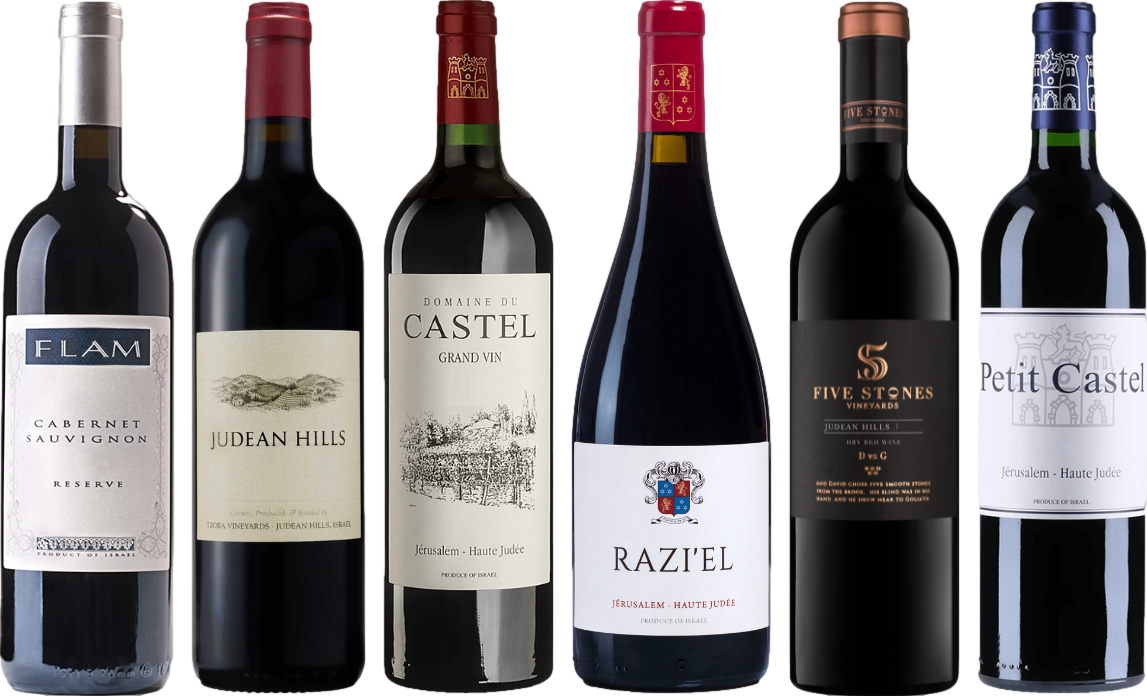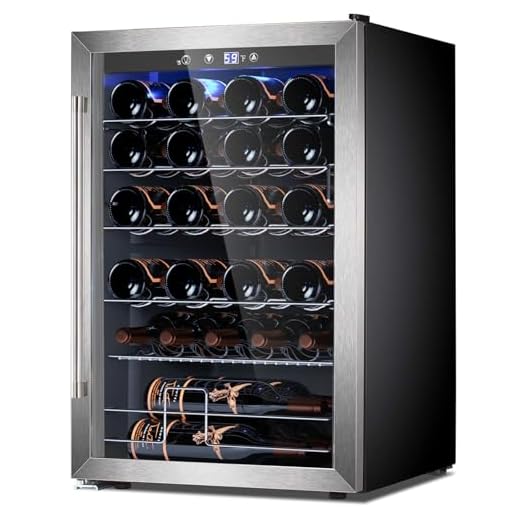



Serving these exquisite varietals at a temperature between 55°F and 65°F (13°C to 18°C) is recommended for unlocking their full flavor profile. A common practice involves placing the bottle in a cooling solution for approximately 30 minutes prior to consumption. This method enhances the tasting experience, allowing rich fruit notes and subtle tannins to shine.
Utilizing a thermometer can provide precision, ensuring the perfect balance is achieved. If a cooling vessel is unavailable, simply placing the bottle in a refrigerator for about 15 minutes can be effective. The key lies in avoiding overly cold temperatures, as chilling can mute the intricate aromas and flavors that define these beverages.
For those who enjoy experimentation, consider the influence of glassware on temperature retention. Opt for larger bowls that facilitate airflow, helping maintain the ideal warmth while sipping. Savoring these drinks at the right temperature not only elevates enjoyment but also allows for a more profound appreciation of their complexities.
Chilling Recommendations for Dark Varietals
Lightly cooling dark varietals enhances their aromatic profiles and makes them more approachable. Aim for a temperature range between 55°F to 65°F (13°C to 18°C). This temperature allows the complex flavors to emerge while maintaining the integrity of the varietals.
Specific Guidelines
For a quick refresh, place the bottle in an ice bucket filled with equal parts ice and water for about 15-20 minutes. If time allows, refrigerate for 30-60 minutes prior to enjoyment. Avoid excessive cooling, as overly cold temperatures can mute the flavors and aromas.
Pairing Considerations
Pairing with dishes such as grilled meats or roasted vegetables can benefit from a slightly cooler temperature. The balance of warmth from the food complements the subtle nuances of the beverage, creating a harmonious dining experience.
In conclusion, adjusting the temperature of darker varietals can significantly enhance the overall tasting experience. Experimenting with various temperatures will allow for a better appreciation of the unique characteristics each bottle offers.
Optimal Serving Temperature for Red Wine
The ideal temperature for serving these beverages typically ranges from 60°F to 65°F (15°C to 18°C). This range allows the complexities of aromas and flavors to unfold, enhancing the overall tasting experience.
Factors Influencing Temperature
- Type of Grape: Different grape varieties express their characteristics better at specific temperatures. For instance, lighter varietals can be served towards the lower end of the spectrum, while fuller-bodied options benefit from slightly warmer conditions.
- Age: Older vintages often require a bit more warmth to reveal their nuances, while younger selections can be enjoyed at cooler temperatures.
- Climate: Consideration of the climate where the wine is produced can also guide optimal temperatures, as wines from cooler regions might be better suited to slightly lower serving temperatures.
Practical Tips
To achieve the best results, it’s advisable to use a thermometer for accuracy. If a bottle is too warm, a brief chill in an ice bath can help. Conversely, if it’s too cool, letting it sit at room temperature for a few minutes will suffice.
For an excellent pairing experience, consider serving alongside dishes such as lamb. To learn more about preparing lamb, check out this guide on how to cook lamb breast joint.
Impact of Temperature on Flavor Profile
Serving at the correct degree significantly influences the taste experience. Optimal temperatures enhance specific characteristics while suppressing others. For a nuanced profile, consider a range between 55°F to 65°F (13°C to 18°C). This allows for the expression of fruit flavors, tannins, and acidity.
At cooler temperatures, certain aromatic compounds become muted. Fruity notes may recede, while the perception of tannins can become more pronounced. Conversely, warmer conditions can amplify sweetness and soften acidity, leading to a more rounded flavor. However, excessive warmth might result in an overly alcoholic sensation, overshadowing finer details.
Each varietal responds uniquely to temperature variations. For instance, lighter-bodied choices often display their best nuances when served cooler, while fuller-bodied selections reveal deeper complexities at slightly elevated degrees. Understanding these profiles allows for tailored experiences that highlight the essence of each pour.
Experimenting with temperature can yield fascinating results. A slight adjustment can transform the entire tasting experience, revealing hidden layers and depths. It’s an engaging way to explore the intricacies of different varietals and enhance enjoyment.
Types of Red Wine That Benefit from Chilling
Light-bodied varieties often taste better with a slight drop in temperature. These selections can be served around 55°F to 60°F (13°C to 16°C) to enhance their freshness and fruitiness.
Notable Varieties
- Beaujolais: This wine, made from Gamay grapes, showcases vibrant fruit flavors. Serving it cool accentuates its berry notes.
- Pino Noir: A lighter style of this varietal can benefit from a cool temperature, highlighting its floral and red fruit characteristics.
- Barbera: This Italian option, known for its high acidity, becomes more refreshing when served slightly chilled, enhancing its juicy profile.
Other Considerations
In warmer climates, opting for these styles at lower temperatures helps maintain balance and enhances drinkability. Always focus on the specific characteristics of the bottle to determine the ideal serving temperature.
How to Properly Chill Red Wine
To achieve the best results, a temperature range of 55°F to 65°F (13°C to 18°C) is ideal for lighter varietals, while fuller-bodied options may benefit from being served slightly warmer. Start by placing the bottle in the refrigerator for about 30 minutes. If time permits, an ice bath with a mix of ice and water for 10 to 15 minutes can expedite the process effectively.
For those who prefer slightly cooler temperatures, consider using a wine thermometer to ensure precision. This tool can help monitor the temperature, allowing for adjustments based on personal preferences or specific varietals. It’s advisable to avoid leaving the bottle in the fridge for extended periods, as this can mute the flavors.
| Varietal | Recommended Temperature | Chilling Method |
|---|---|---|
| Pinot Noir | 55°F (13°C) | Refrigerator for 30 min |
| Merlot | 60°F (15°C) | Ice bath for 10-15 min |
| Cabernet Sauvignon | 65°F (18°C) | Refrigerator for 30 min |
| Syrah/Shiraz | 60°F (15°C) | Ice bath for 10-15 min |
Always ensure that the bottle is not excessively chilled, as overly low temperatures can mask the complexity of the flavors. The goal is to enhance, not diminish, the tasting experience.
Common Mistakes When Chilling Red Wine
One frequent error is placing bottles in the freezer for rapid cooling. This method risks freezing the liquid, which can alter flavors and even damage the cork.
Another mistake involves serving at overly low temperatures. While a slight reduction is beneficial, excessive cooling can mute the aromatic qualities and complexity, leading to a flat experience.
Failing to account for the ambient temperature is also common. If the environment is warm, the beverage may not reach the desired temperature during the meal, impacting enjoyment.
Using ice cubes directly in a glass can dilute the liquid, compromising the intended flavor profile. Instead, consider using a dedicated wine chiller or an ice bucket with water and ice.
Not allowing sufficient time for the beverage to acclimate post-cooling is another misstep. A brief resting period after removal from the cooling source can help restore balance and enhance the tasting experience.
When to Serve Red Wine at Room Temperature
Optimal enjoyment occurs when certain varieties are presented at slightly elevated degrees, typically ranging from 60°F to 65°F (15°C to 18°C). This temperature facilitates the release of complex aromas and flavors, allowing the nuances of each selection to shine through.
Factors Influencing Temperature Selection
The type of grape, the winemaking method, and the age of the beverage significantly influence the ideal serving temperature. Bold choices like Cabernet Sauvignon and Syrah often benefit from this warmer range, enhancing their rich profiles. In contrast, lighter options such as Pinot Noir can be enjoyed slightly cooler, around 55°F to 60°F (13°C to 15°C), preserving their delicate characteristics while still adhering to the principle of room temperature.
Practical Serving Tips
When aiming for the perfect temperature, consider allowing the bottles to rest in a cool environment for a short period. If the ambient temperature is higher than desired, a quick adjustment can be made by briefly placing the bottles in a cool space or using an ice bucket for a few minutes. Patience is key; overchilling can mask flavors, while prolonged exposure to heat can compromise quality.







